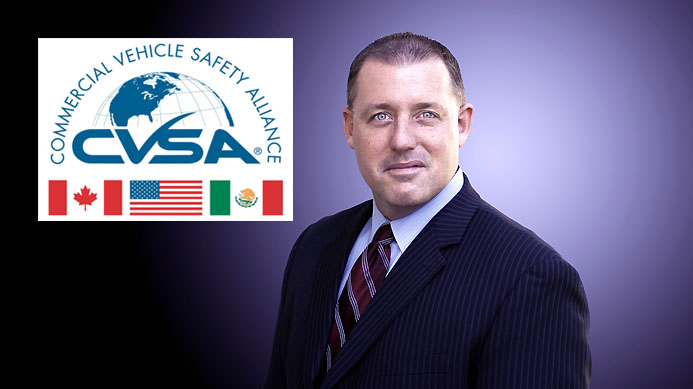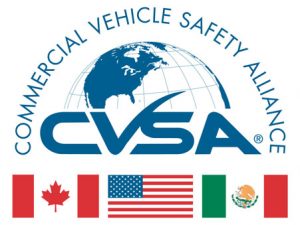
By Glenn Swain
Lately officials at the Commercial Vehicle Safety Alliance have been on the receiving end of harsh criticism by a number of motorcoach operators wanting the agency to crack down on unsafe rogue curbside carriers. The rise in deadly bus accidents over the last few years has drawn a bright spotlight on the issue, and honest, compliant carriers say that spotlight on black sheep operators is also giving them and the industry a black eye.
The rub for many safety-conscious carriers is that when a tragic bus accident occurs, all bus carriers are put under the microscope. Bus industry professionals are asking how rogue bus companies can continue to operate when a company’s safety and accident records, the number of inspections and company rating are posted online on the Federal Motor Carrier Safety Administration’s website on the Safety and Fitness Electronic Records (SAFER) System.
 While acknowledging that bus safety is a major concern, CVSA Executive Director Stephen A. Keppler told BUSRide on Tuesday that the bus industry needs to have an appreciation of enforcement’s duty and that it goes beyond inspecting only buses. Keppler said more people are being killed in truck crashes.
While acknowledging that bus safety is a major concern, CVSA Executive Director Stephen A. Keppler told BUSRide on Tuesday that the bus industry needs to have an appreciation of enforcement’s duty and that it goes beyond inspecting only buses. Keppler said more people are being killed in truck crashes.
“States are in tight budget crunches and they are being asked to drive down fatalities,” Keppler said. “We have to focus where those fatalities are occurring.”
Keppler was quick to point out that over the last four years or so there has been an uptick in safety enforcement in the bus industry, enough work to keep the agency’s 12,000 certified inspectors very busy. He acknowledged that enforcement needs specialized training to be able to do their work along with all of their other duties, and that most of the inspectors are not certified in bus inspections.
“We’ve increased roadside inspections from about 25,000 a couple of years ago to about 100,000 in this past year,” Keppler said. “In comparison, there were 3.5 million truck inspections. Every bus carrier has been visited by some federal or state enforcement official in the last four years or so. That’s certainly not the case in the trucking industry.”

Christopher Crean, Peter Pan Bus Lines’ vice president of Safety and Security, told BUSRide this week that he does not understand how the CVSA can miss the number of reckless operators. He pointed out that operators can be found online for the world to see.
“If I can go online and pick a carrier that I saw today on the highway and go in look at their CSA score and look at how horrendous it is, I find it troubling that they are not finding them,” Crean said. “Everybody is in shock that some carrier has a horrible report card. It’s been there for six or seven months. You see that same carrier, but under a different name and color bus, still operating. It really makes life for us difficult, not to even mention the fact that it puts such a black eye on an industry that really strives very hard to adhere to safety and security principles.”
Operators are also calling on CVSA officials to do more on-site inspections. But according to Keppler it is not that easy.
“The destination and origin inspections have a lot of logistical issues and it takes resources to organize them,” he said. “Even at terminals and at destination inspections, that is private property. The owner of that property does not have to let the officer on the premises. We’ve had circumstances in the past where that’s created a problem, where there is a big enforcement presence and the operator believes it has an impact on their customers and buses.”
Schumer and Legislation

U.S. Democratic Senator Charles Schumer has recently spoken out on increasing oversight of curbside carriers. After the March 12 bus crash in the Bronx that killed 15 and injured 18 others, Schumer, along with U.S. Congresswoman Nydia Velázquez, requested a National Transportation Safety Board study on curbside carriers.
That study, released in late October, revealed that curbside carriers with 10 or fewer buses and carriers who have been in business for 10 years or less have higher accident rates and higher roadside inspection violation rates. The study found that the fatal accident rate for curbside carriers from January 2005 to March 2011 was seven times that of conventional bus operations. The report also found that the FMCSA is overburdened. There are more than 765,000 U.S. motor carriers, but the ratio is 1.15 investigators for every 1,000 carriers.
Some well established and compliant operators believe Schumer and other politicians lump all carriers into one pot, and they resent it.
“He wraps a few bad apples into the bunch,” Crean says. “The only thing he’s basing his opinion on is a couple of rogue carriers. I don’t think he’s even taken the time to look at what some of the better carriers are doing. I’m sure he’s probably never gone to Greyhound and looked at what their safety and security protocols are. He’s making a judgment based on what he’s seen and that’s it.”
Keppler sees it differently, welcoming the outcry by politicians and organizations.
“Senator Schumer, the NTSB, all of these groups that have the bully pulpit can help raise awareness of the challenge we’re dealing with,” Keppler said. “The job that enforcement does only gets notice when there is a problem. We’re trying to be more proactive with bus safety. The more our political leaders and agency heads on the administration side raise awareness, it certainly shines a spotlight more on our ability to communicate to people the challenges that enforcement is dealing with.”
Another divisive issue is whether CVSA officials should be allowed to randomly stop a carrier while en route. Currently, law enforcement can only stop a bus if there is an imminent hazard present, such as speeding, reckless driving or a flat tire. An official then can ask for driver documents and review other information.
CVSA officials are working with Congress and the FMCSA to repeal a law that prohibits random inspections, claiming it would be a valuable tool in stopping rouge carriers in their tire tracks. Meanwhile, the bus industry counters that stopping buses en route could put passengers in jeopardy and could possibly create havoc with bus schedules and driver hours and service.
“There are things that are hampering our ability to do more enforcement, and the (bus) industry, frankly, is pushing back on this,” Keppler said.
Keppler claims that on more than one occasion when roadside inspections do occur, bus passengers commend the officers for ensuring their safety.
“Generally if there are no problems, these inspections take 20 to 30 minutes,” Keppler said. “It’s not like the vehicle is parked for hours on end. In the trucking industry they have the same scheduling issues to deal with. It’s not unique to the bus industry.”
A provision to roll back or modify the current law that prohibits en route inspections could be inserted in the upcoming surface transportation bill, set to be voted on by lawmakers by the end of the year.
“You can never predict what congress will do,” Keppler said. “They are listening to us and they understand our needs. We’re hoping for some change.”
